An epitome of grace, elegance, and beauty - that's the true definition of a flower!
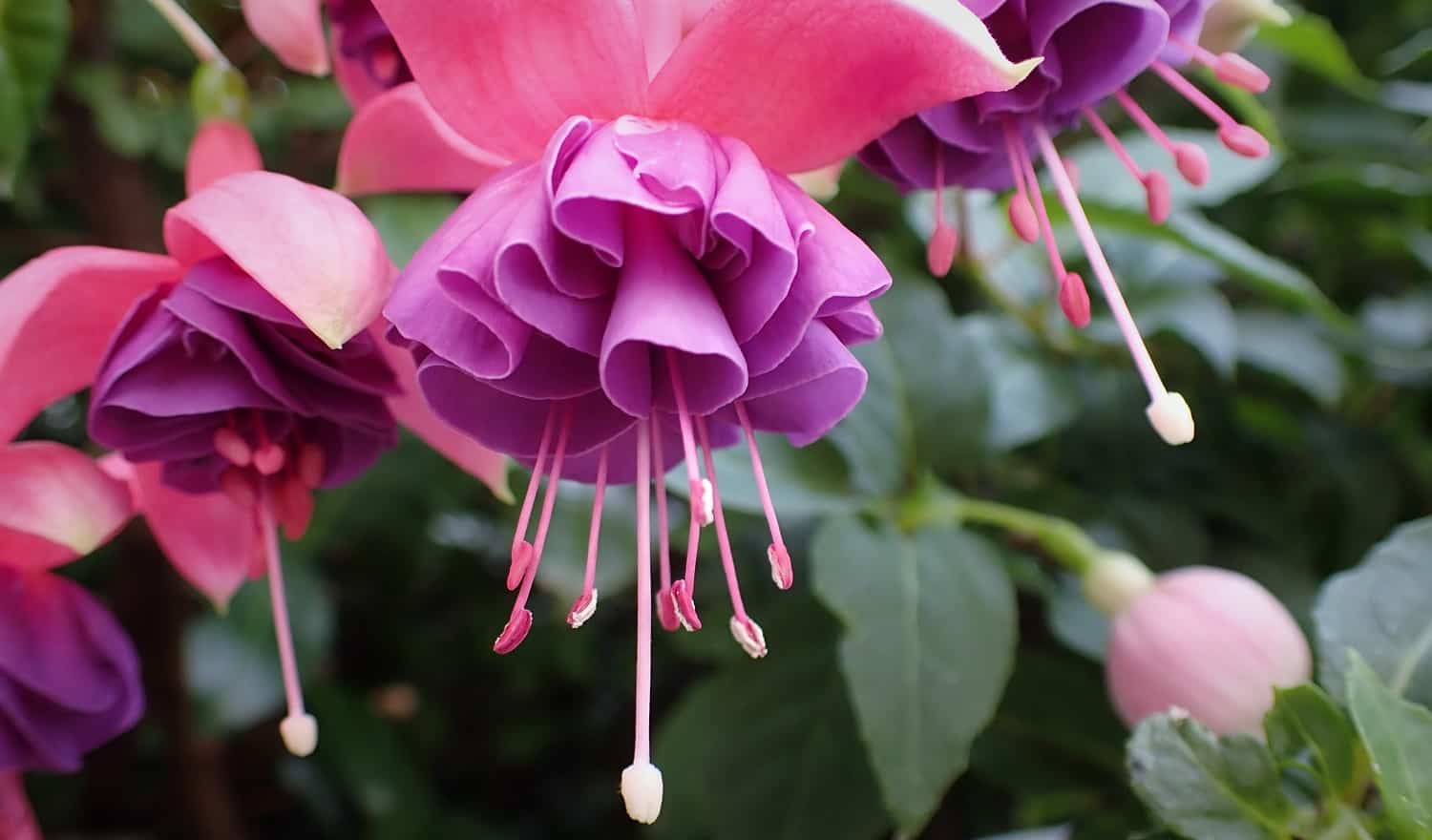
That being said, did you know that there are over 400,000 flowering plant species in the world? Each varies in terms of color, shape, petal arrangement, and more. So, you can well imagine the diverse range of pink and fuchsia flowers.
Now, as a gardening enthusiast, you might be familiar with a few, but definitely not all of them. That's why we've come forth with this guide, providing brief introductions to the 30 types of pink and fuchsia flowers that you may grow in your garden.
For clarity, we've divided the article into two sections, each focused on the different flower variants under their individual categories.
So, without further ado, let's get going!
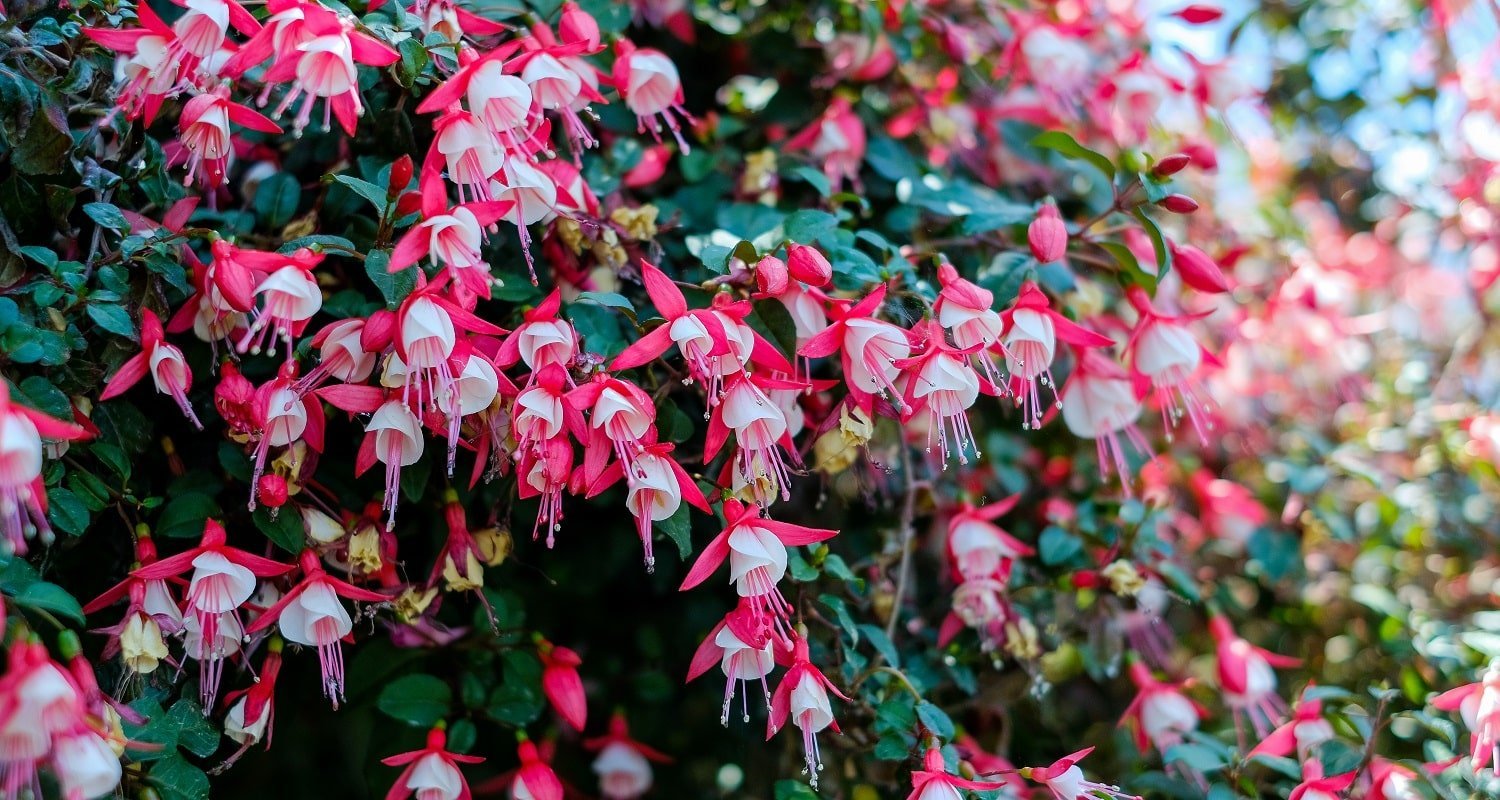
Types Of Pink Flowers
In this section, we'll be diving into the ultimate list of the most popular types of pink flowers. And with pink falling under a vast color spectrum, we'll be covering flowers in various shades, including light pink, hot pink, and every shade in between.
-
Pink Rose
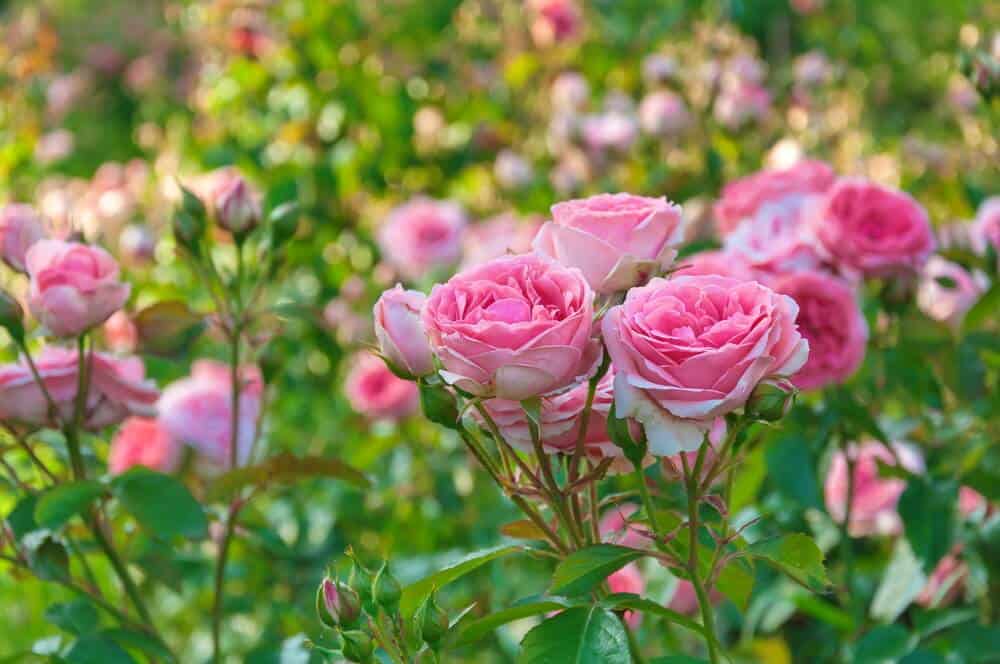
You obviously don't need to be a gardener or anthophile to come across a pink rose. It's probably the most common and popular flower on this list that’s seen in most gardens and backyards from mid-spring to fall.
In general, roses are a symbol of love and beauty, making them a top pick in anniversaries and other such occasions. But to be more precise, a pink rose is a representation of admiration and appreciation.
-
Tulip

Next up, we have another popular pink flower that represents nurturing and true love. Tulips can be perennial or annual, depending on the climate. Consequently, they bloom from late-march to mid-May in well-drained soil and full sunlight, just in time for celebrations like Easter and Mother's Day.
-
Petunia

Originating from South America, Petunias come in a wide range of colors, pink being the most common. Along with this, it comes with pretty patterns caused by contrasting white veins, which in turn, make the flower as beautiful and elegant as ever.
Petunia grows well in planters with fast-draining soil under full sunlight. As such, they bloom from summer to mid-fall in hardiness zone 9-11.
-
Carnations
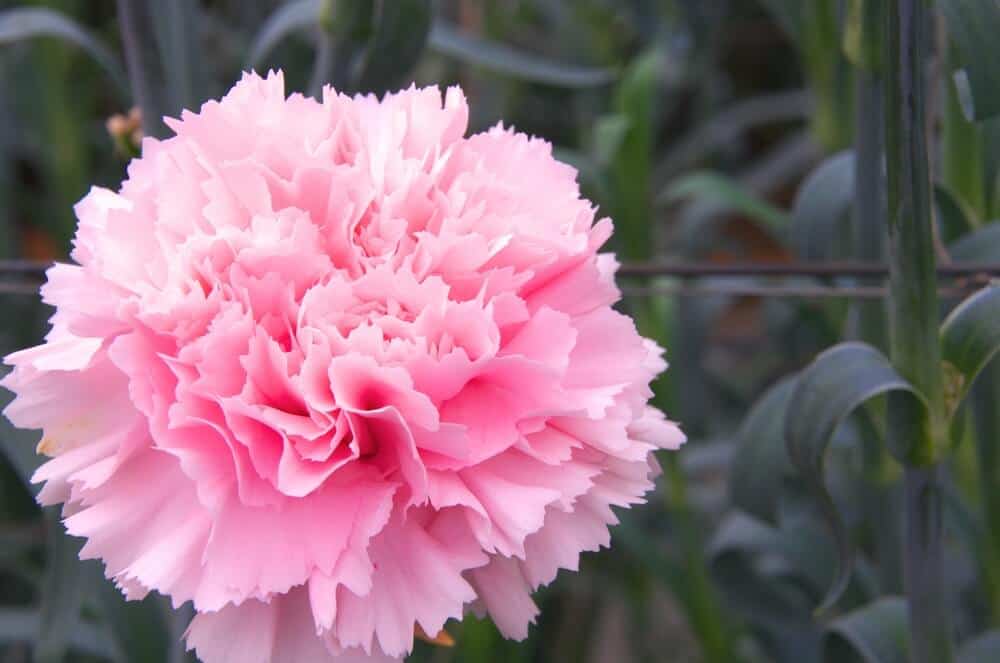
Carnations are perennials that grow well in late spring through summer in fertilized and well-drained soil with a 6.7 pH level. Now, these flowers are naturally pink or pinkish-purple in color.
However, with genetic engineering and selective breeding, Carnations can also occur in different colors such as white, red, orange, and blue. Furthermore, these playful flowers are easy to maintain as they require watering only once or twice weekly.
-
Dahlia

An interesting fact about Dahlia is that it originates from Mexico, and comes in 42 different species, each known for its gorgeous petal arrangement. Having said that, it is an annual flower that blooms from late spring to early fall in well-drained and rich soil. All it requires is moderate watering and sunlight to illuminate grace and kindness.
-
Calla Lily

For those who don't know, Calla Lily isn't a lily, despite having its name. In fact, it is a perennial flower that blooms in late spring through summer in loose and well-drained soil with a pH level of 6.0 to 6.5.
You can easily grow it in a pot in your shaded patio since it is well suited for both sunlight and partial shade. However, unlike Dahlias and Carnations, Calla Lily needs to be watered regularly once it's planted because its water needs are significantly high.
-
Begonia
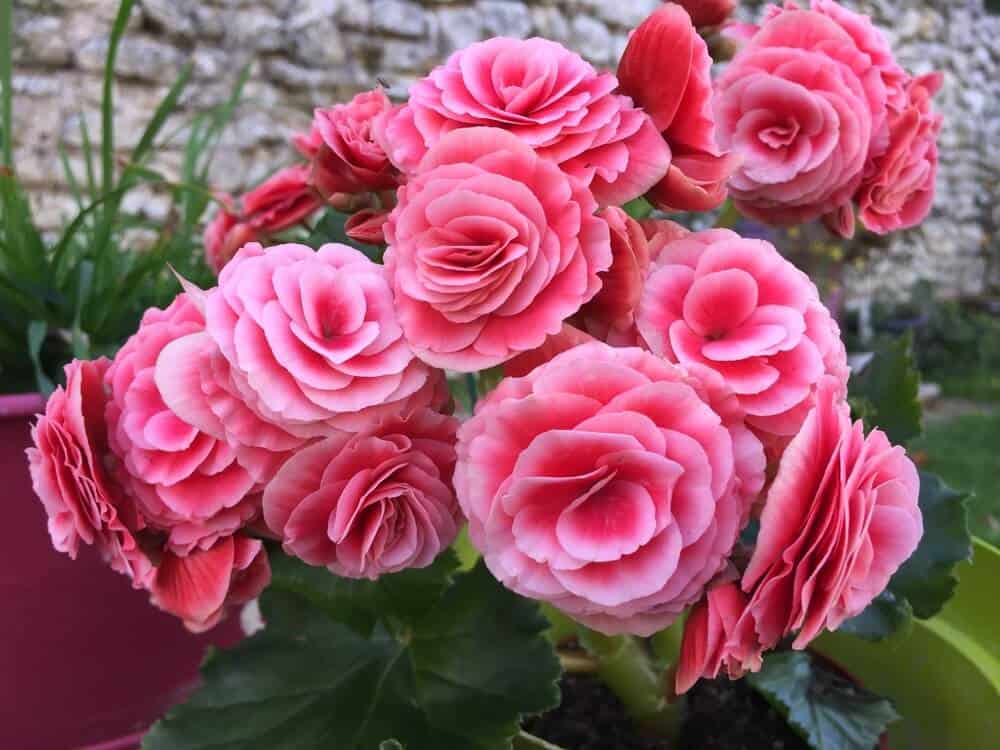
Begonias usually come in 1,800 unique species under three primary categories - perennial, tuberous, and semperflorens. And depending on the variety, these flowers grow well in full sunlight or even partial shade.
However, it blooms in moist soil with a pH level of 5.5 to 6.2. For this reason, you'll need to water it regularly, especially when potted indoors.
-
Hydrangea

Hydrangeas are easy to recognize as they resemble mini bouquets that bloom from green and leafy bushes. That said, you'll be amazed to know there are over 70 types of hydrangeas that typically require moderate to high watering in order to grow.
You can plant the shrubs in soil containing sand or peat moss under full sunlight or partial shade. In other words, it is the perfect household plant that blooms in mid-spring through summer.
-
Butterfly Bush
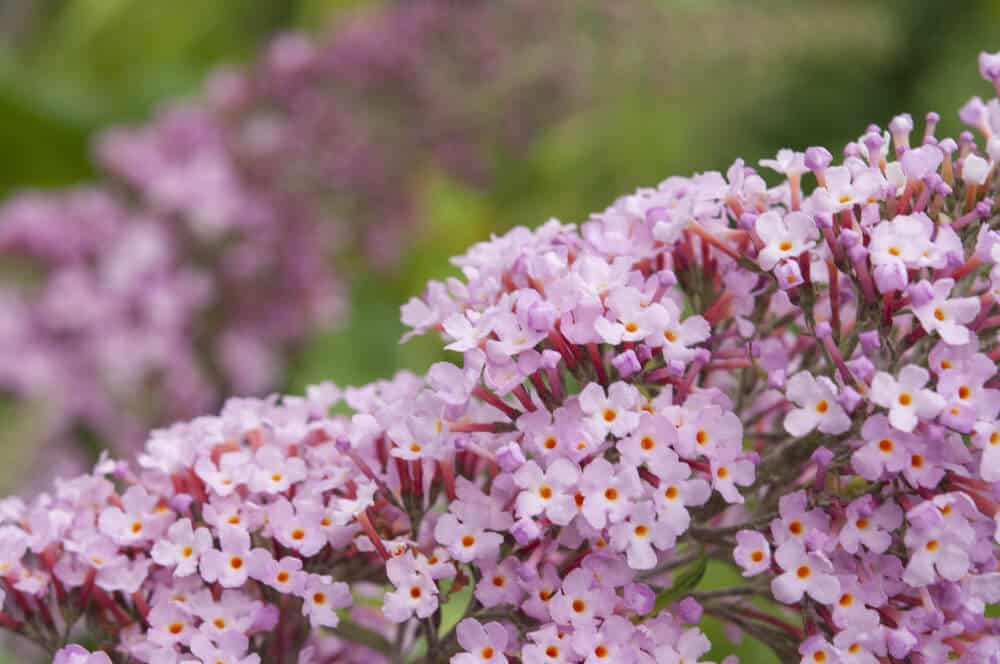
Well, you guessed it right! This flower bloom gets its name from its ability to attract butterflies like a magnet.
It is a perennial or shrub-type flower plant that quickly grows into medium to large bushes covered with small and pretty pink flowers. In fact, the Butterfly Bush is relatively easy to maintain since you'll only have to water it once a week. Now, it's undoubtedly stunning in pink, but most commonly it comes in shades of lavender and purple.
-
Azalea
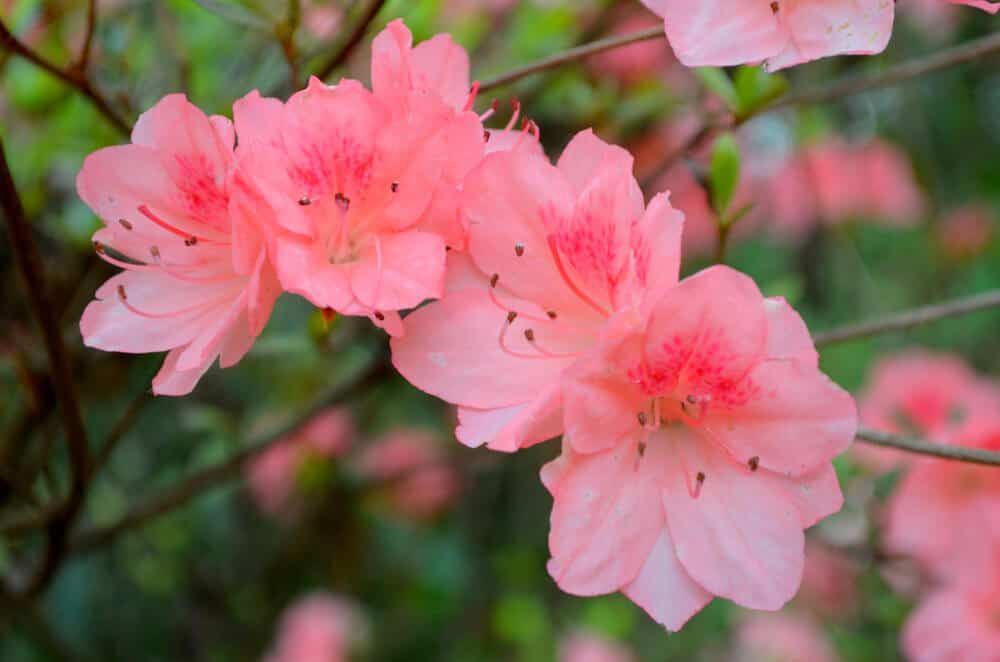
Azalea is a shrub-type flower that usually blooms under the shade of trees during spring and summer. However, you may, at times, also see it growing as early as February. Furthermore, the shrub need not be watered frequently, but make sure it's watered well when required.
-
Hyacinth
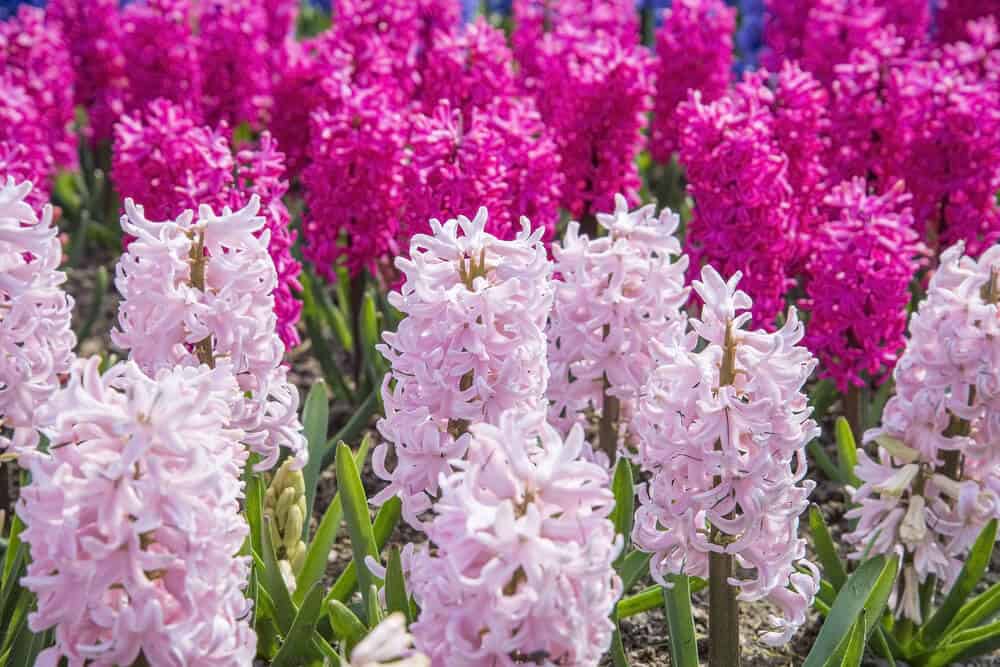
With its origin based in the Mediterranean regions, Hyacinths are perennials that bloom in well-drained soil and sunlight during spring. They usually require moderate watering. However, you'll need to plant the Hyacinth bulbs way in advance (in the fall) in order to achieve a full spring bloom.
-
Stargazer - Oriental Lily
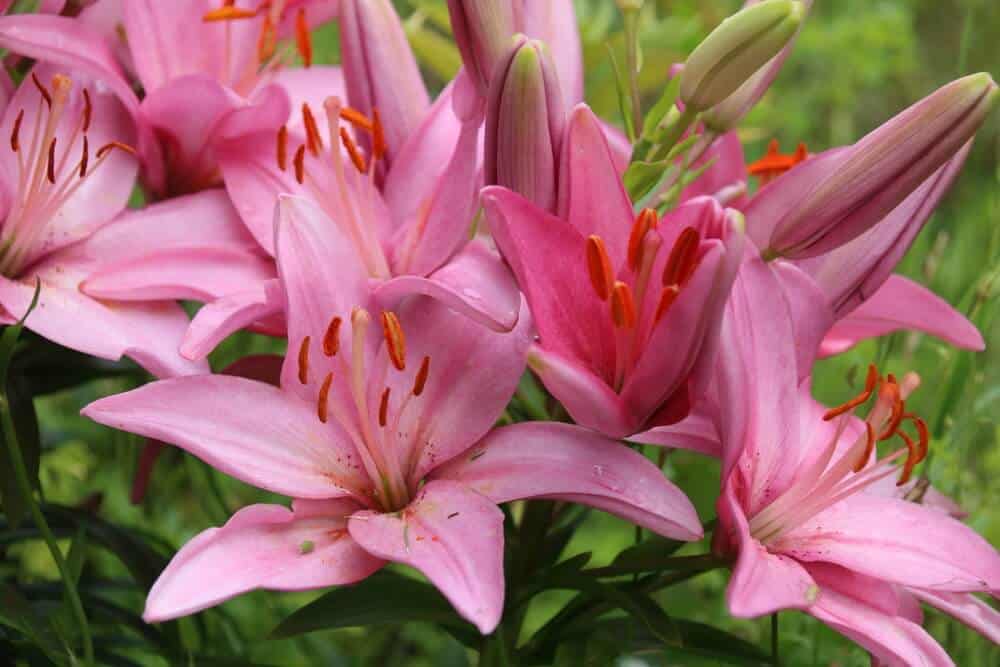
Stargazer Lilies are not only elegant and beautiful, but they also emit a sweet scent from their long stamen. Apart from this, they come with vibrant pink petals, featuring visible markings and spots. As such, Stargazers are often found in bouquets and flower arrangements.
That being said, it is crucial to remember that these flowers can be poisonous to cats and infants. So, you need to be cautious, especially if you have your kid or pet running around the house.
-
Zinnia
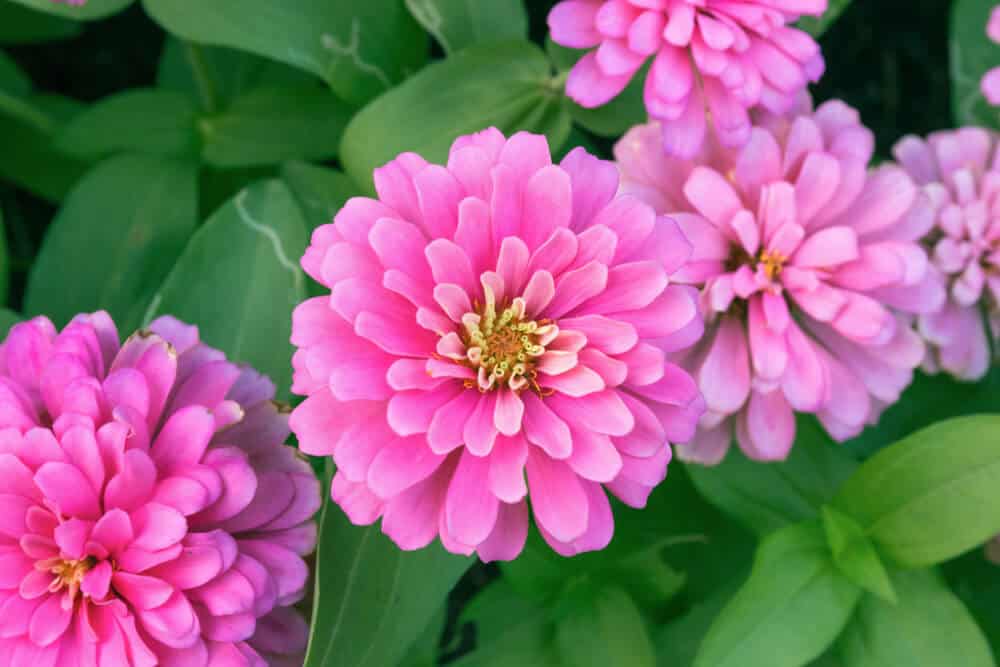
Zinnias are clustered, pink flowers most commonly found in dry, humid, and hot regions. This is because they usually bloom during summer in sandy soil and full sunlight. Plus, these annual flowers need to be watered rarely.
What's more? There are different variants of Zinnia, depending on its petal arrangement. As such, it can have single, double, or semi-double rows of petals.
-
Ranunculus
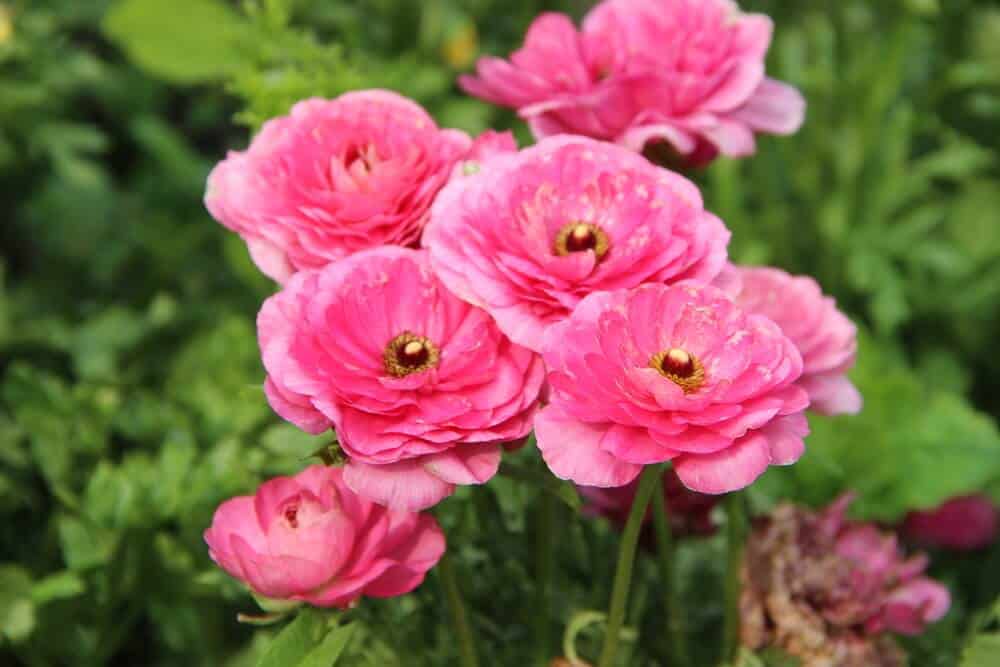
Ranunculus is a large genus of around 500 species of flowering plants that bloom into hot pink flowers. And all the members of the genus are referred to as buttercups, water crowfoots, and spearworts.
-
Oriental Poppy
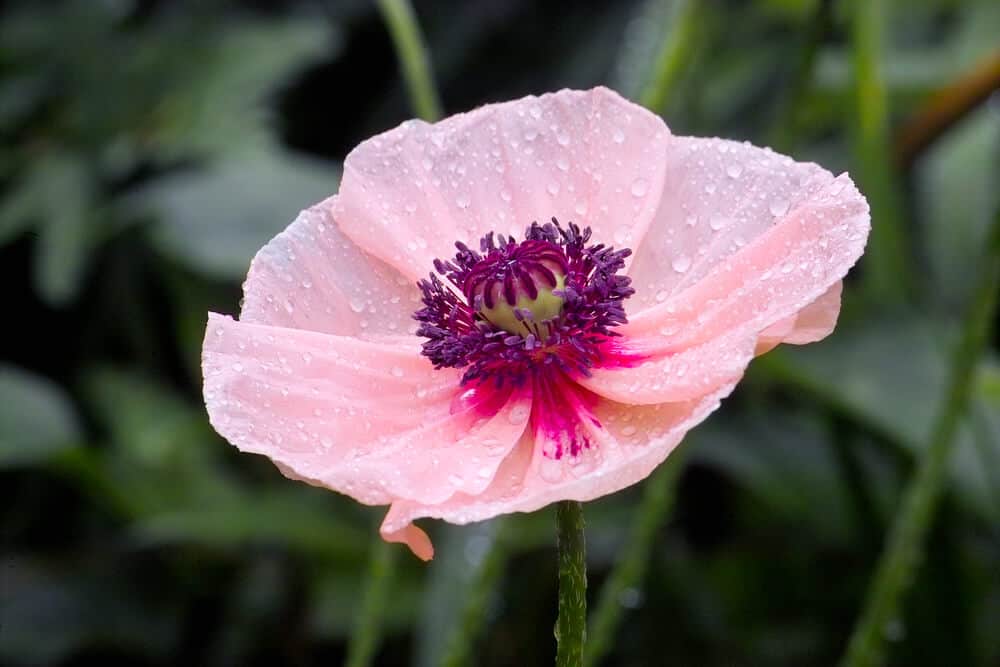
This perennial flower plant gathers energy throughout the year to bloom in mid-summer. Along with its hairy and finely dissected leaves during spring, the light-pink flower is identified by its crepe paper-like petals.
Types Of Fuchsia Flowers
In this section, we'll introduce you to the different types of fuchsia flowers, including both the trailing and upright variants. Furthermore, the list includes a diverse group of fuchsias in shades of red, pink, white, and purple. So, without wasting any more time, let's dive in.
-
Hardy Fuchsia
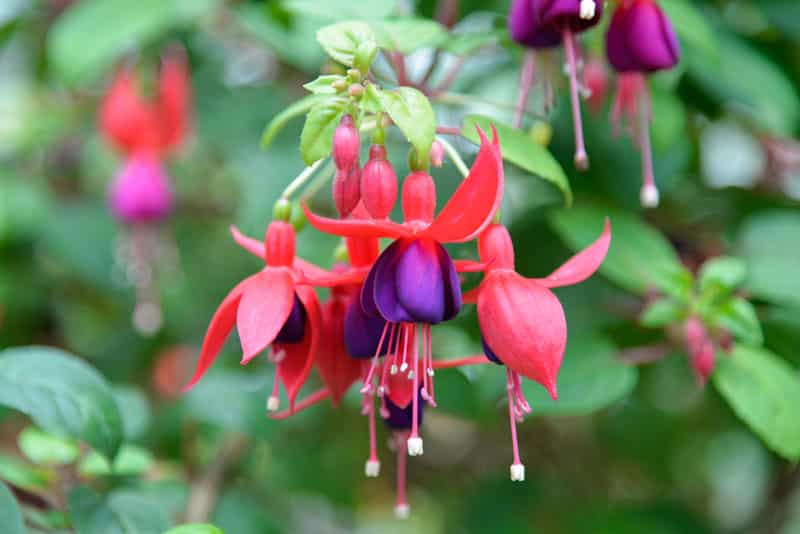
This is a mid-sized shrub that blooms in summer until the first winter frost. It produces small yet elegant petals that sparkle in the sunlight, almost resembling gold. Perfect for coastal and cottage gardens, Hardy Fuchsias thrive in the hardiness zones (7-10).
As such, they can grow anywhere between 2-3 feet, even in soil, containing sand or a good deal of clay. What's more? Well, you'll definitely love its foliage as much as the flower.
-
Dollar Princess
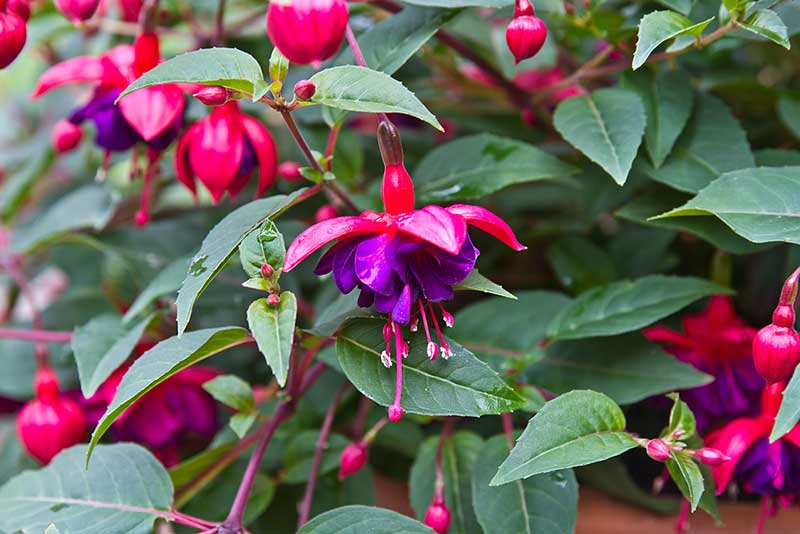
As a gardener, you'll love the exotic "Dollar Princess" Fuchsia since it grows well in both sun and shade. That's not all. The shrub teamed with wooden branches, darker leaves, short, purple tubes, and red petals can survive through the winter when potted indoors. Thus, with a hardiness zone of 2-11, it blooms throughout the year, irrespective of the climate.
-
Army Nurse

Another garden classic similar to the "Dollar Princess," the "Army Nurse," fuchsia can also grow well in any soil in sunlight or partial shade. The only point of difference between the two species is that the latter is a bit bigger and bluer with glossier leaves. That being said, the flower is well-suited to growing in containers and mixed herbaceous borders.
-
Alice Hoffman

The "Alice Hoffman" Fuchsia is a small, upright shrub, featuring bronze-tinged foliage and semi-double flowers. It blooms from summer into autumn with pink sepals and white-pink petals. However, the color of the overall flower may differ from season to season, where it remains white in summer and pink in autumn.
On that note, you can grow this Fuschia flower in a mixed herbaceous border or pot it in a shaded or partly-shaded patio.
-
Lady Boothby

Deciduous or evergreen shrubs, which are rarely perennials, the "Lady Boothby" Fuchsia features a tubular calyx with four erect petals and four spreading sepals. In fact, it is a bicolored flower that comes in a combination of carmine-pink and aubergine.
Moving on to its origin, the strikingly stunning fuchsia was bred from a Brazilian species in 1939. Another interesting fact? It was named after the founder of the British Fuchsia Society.
-
Phyllis

Phylis is a type of hardy and upright fuchsia, bearing single and semi-double flowers. That being said, the stunning contrast between the beautiful rose-red sepals and deeper red petals is a treat to the eyes.
Gardeners usually plant it in a sheltered spot during winter away from the cold, harsh winds. And during autumn, it requires a thick layer of mulch, which in turn, retains soil moisture and enhances fertility.
-
Paniculata
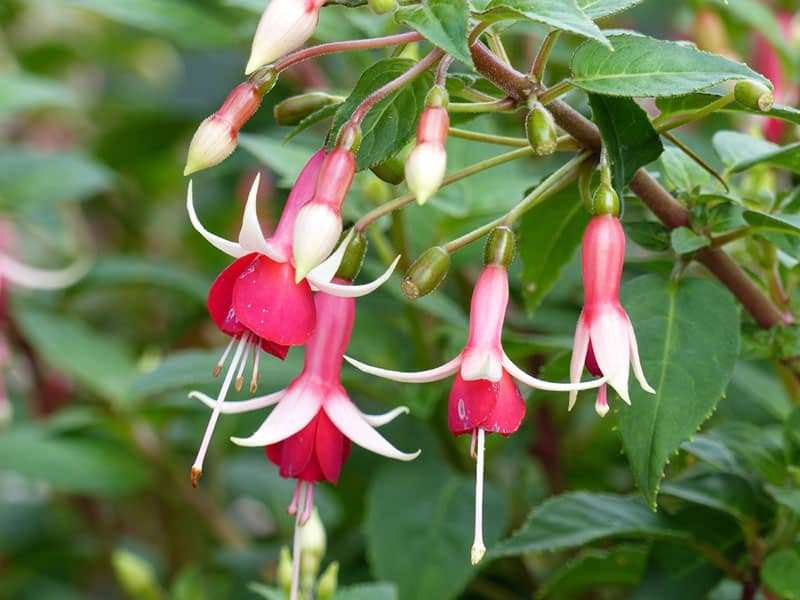
Paniculata is a moderately rare fuchsia that grows well in hard zones 9-11 and produces an edible fruit after blooming. Pretty impressive, right? Well, there's more!
The attractive, tubular pink and white flower grows well in any area, be it in sandy soils or the heavy clay soils of the coastal areas. And after its flowering season, it grows back again after a year, thanks to pollination brought about by insects.
-
Rapunzel
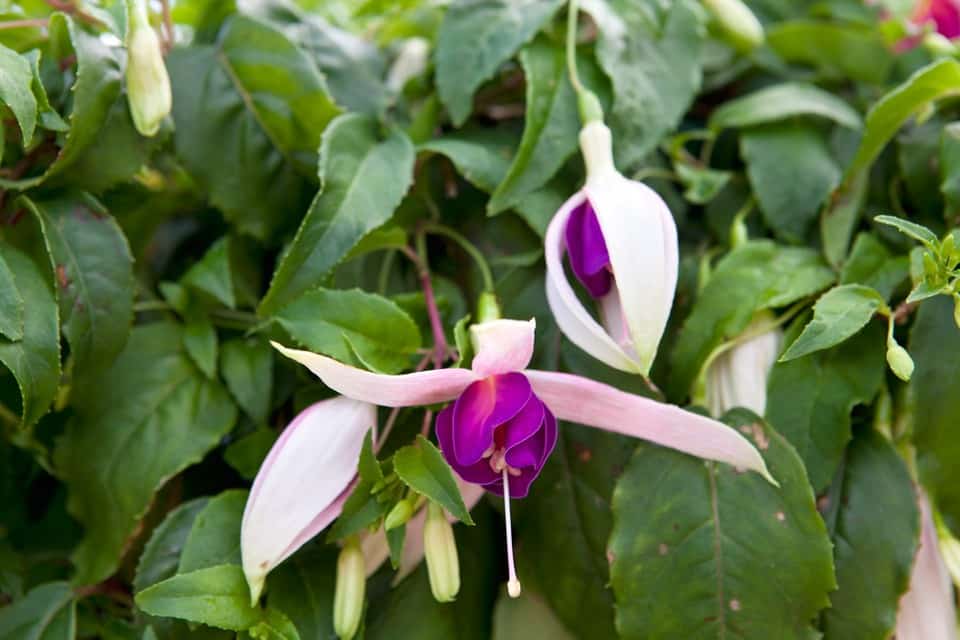
The "Rapunzel" Fuchsia is as fascinating as its name! Being a trailing and non-hardy fuchsia flower, it trails up to 60cm with white or pale-pink sepals and purple petals. As such, it looks as beautiful as a fairytale when grown in pots, hanging baskets, and window boxes.
-
Fulgens
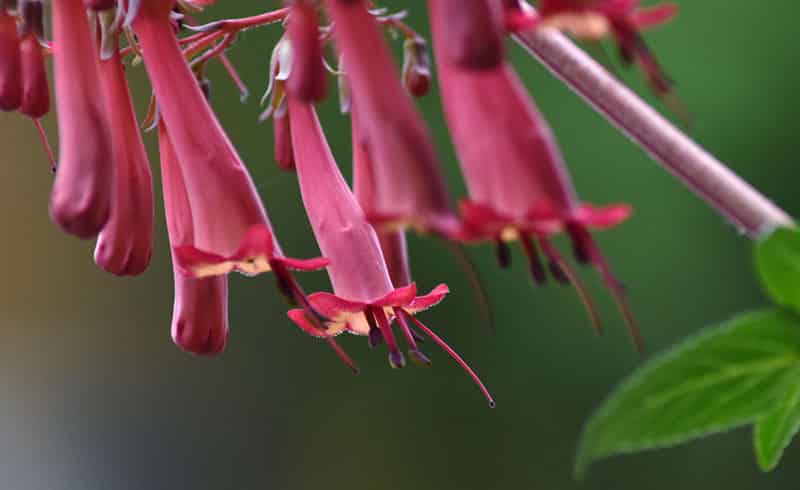
Gardeners and anthophiles may know this flower-type as the "brilliant fuchsia." Why the name? Well, this is because of its exquisite hanging red or pink blooms. Other than this, it grows beautifully about 4-5 feet tall in hardiness zones 10-11 for most of the year. What else? Like the Paniculata, it produces edible fruits by the end of its flowering season.
-
President Barrie Nash
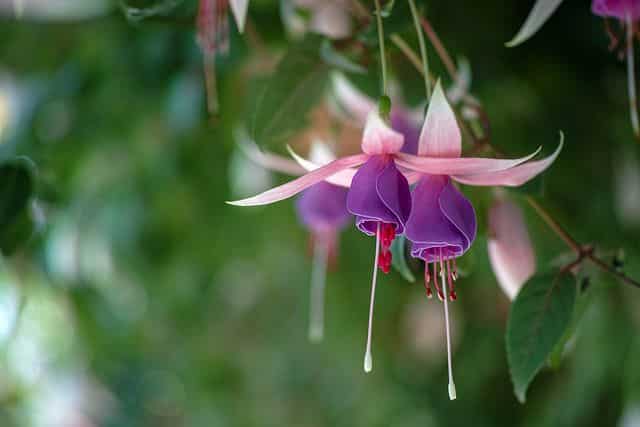
The upright, bushy fuchsia comes with dark green leaves and gorgeous single flowers. Having said that, you'll love its elegant and attractive color combination of pale-pink and lavender. In fact, the perfect blend of colorful, tubular, narrow, and long sepals and darker petals make "President Barrie Nash" a popular choice among garden enthusiasts.
-
Fuchsia Genii
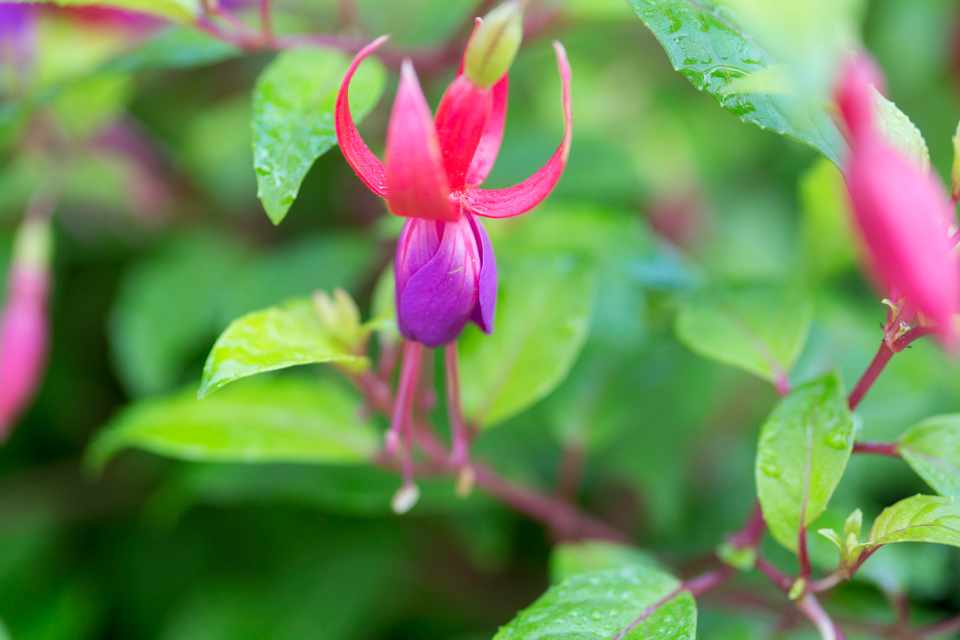
Coming to yet another hard fuchsia, the Fuchsia Genii grows well in hard zones 7-10, and in various soil-types, including chalk, loam, sand, and clay. The erect, deciduous compact shrub blooms single flowers with narrow pink sepals and purple-red petals during summer and autumn.
Along with this, it comes with yellow-green foliage that resembles gold in the sunlight. So, you can well imagine how its magnificent beauty makes it stand out in the garden.
-
Champagne Celebration
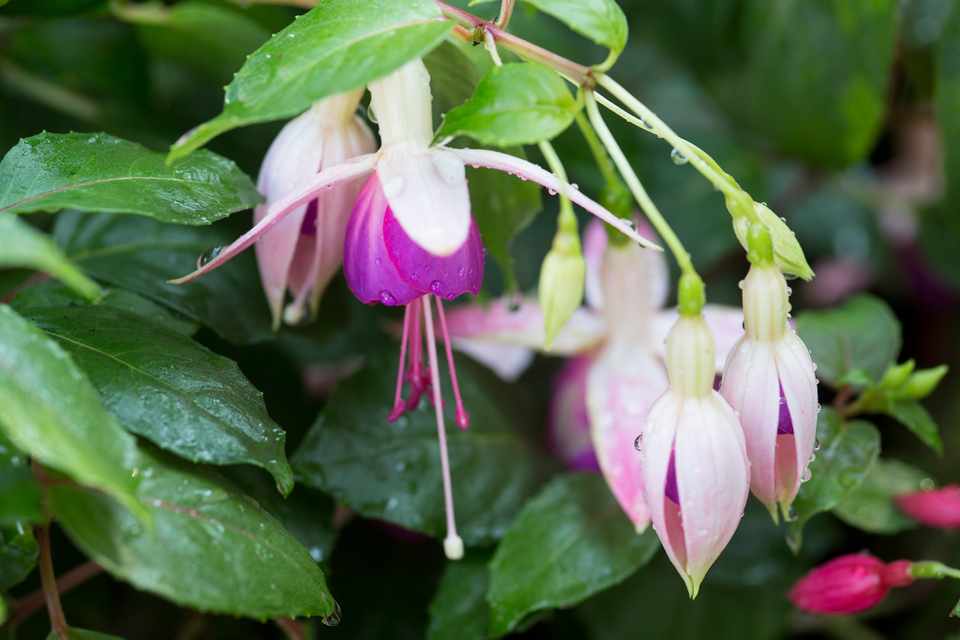
An upright and bushy shrub bears the hardy "Champagne Celebration" Fuchsia flower. It blooms single flowers with flared carmine-pink or purple petals. On the other hand, the sepals come in shades of pink with salmon edges. That being said, you'll love how the pale-pink at the base blends with a deeper pink at the pointed tip - a stand-out feature of this fuchsia-type.
-
Blands New Stripe
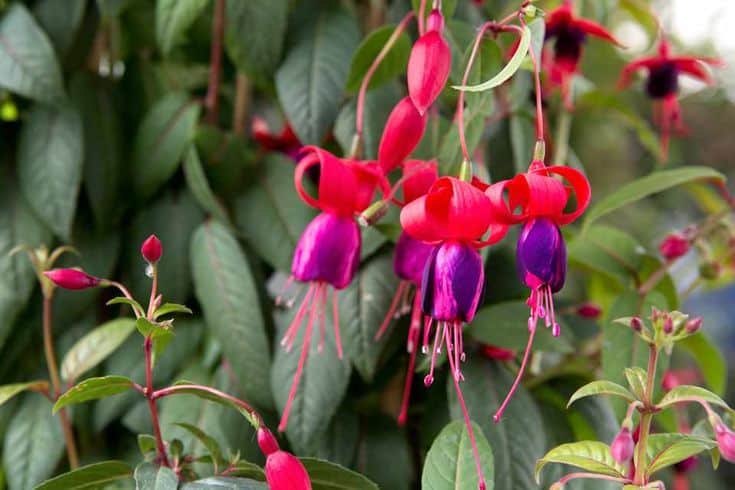
A unique name for a rare and unusual flower - the Fuchsia "Blands New Stripe" is a mid-sized deciduous fuchsia shrub with a bushy and weeping habit.
Bearing single flowers in the summer with striped pink and violet petals and red sepals, the stunning ornamental flower is undoubtedly one-of-a-kind. That's not all. Along with its exotic appearance, you'll definitely appreciate its contrasting darker green foliage.
-
Aurea

Aurea will grow exceptionally well in all soil conditions, be it clay or sand, as long as the soil remains moist. On that note, it does well in hard zones 6-10, irrespective of the climate. To our delight, this fuchsia flower can be potted or planted in a flower bed under full sunlight or in a patio under partial sunlight or even full shade.
Furthermore, the golden foliage of the Aurea is just as beautiful as its red bloom that hangs gently. And when paired with contrasting flowers such as snapdragons, it looks even better.
-
Seventh Heaven Fuchsia
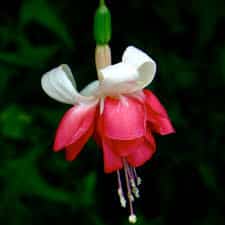
This fuchsia shrub produces double-blossomed flowers, which resemble a pair of angel wings. Thus, the name "Seventh Heaven." Coming to its color, these fuchsia flowers are typically white with a pink under-blossom, proving to be an epitome of elegance. As such, it also attracts butterflies and hummingbirds with its beautiful appearance.
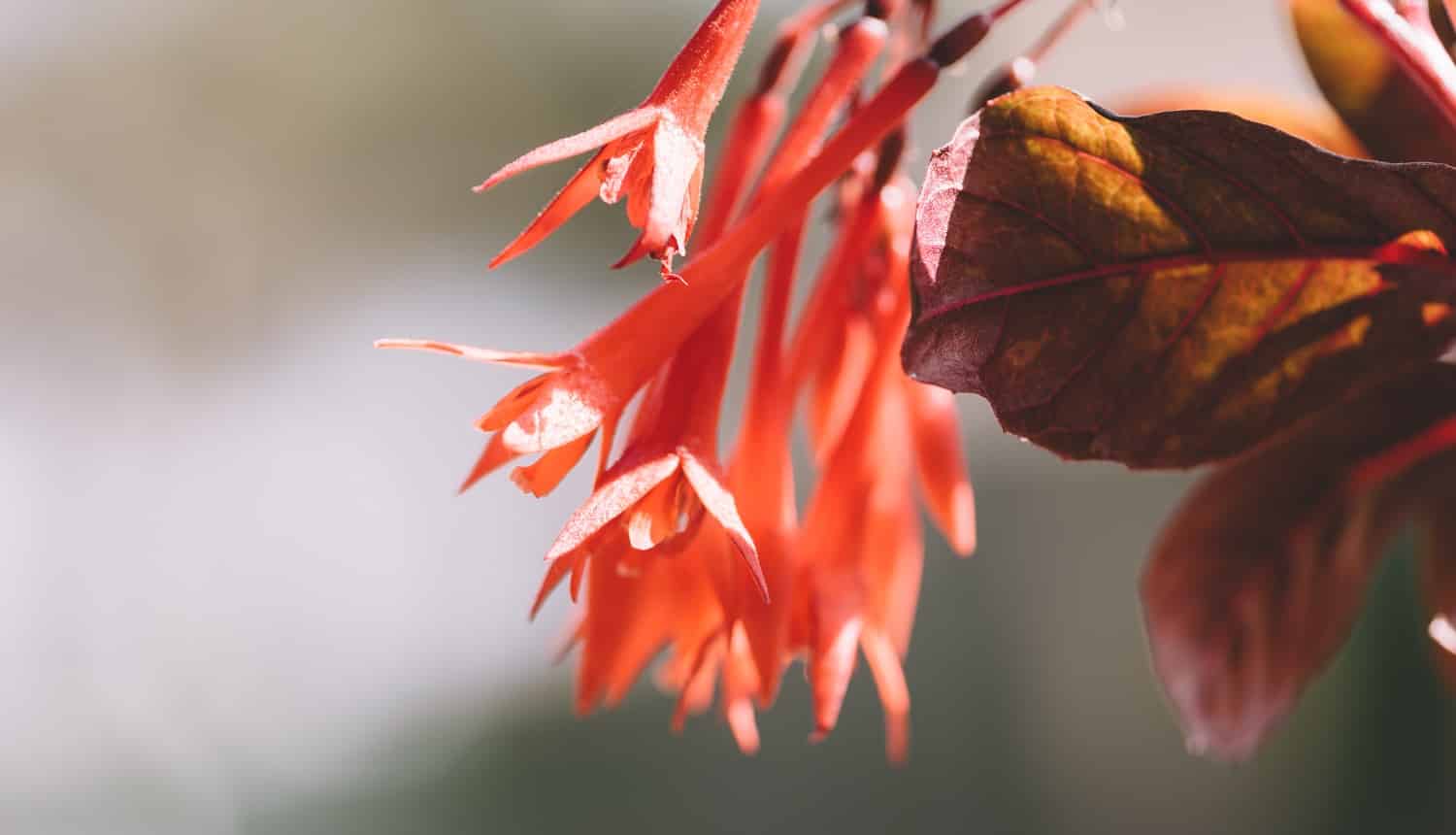
Final Words
Pink flowers most commonly represent love, care, and endearment. On the other hand, fuchsias are ornamental flowers with an exotic appearance. However, both these flower types find their way to bouquets and other arrangements.
That being said, it's crucial to maintain them, keeping their water and soil requirements in mind. On that note, we now come to the end of our comprehensive guide.
With this, we'll take your leave. Until next time, happy gardening!
Related Articles
53 of the Best GreenHouse Plants for Happy Gardeners and Gardens
5 Best Weed Barriers and Landscape Fabric for Happy Gardeners
Where to Find Good St. Augustine Grass Seed & How to Grow It
13 Best Lawn Sprinklers | Review & Buyer’s Guide
11 Best Mosquito Fogger Insecticide
9 Best Fertilizers for Petunias Right Now
9 Best Fertilizers for Hydrangeas
